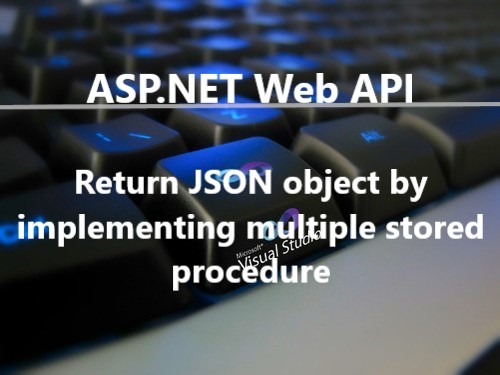Before You start first go through this link for setting your Node.js API environment.
Here I will show you how to retrieve one record using MySQL in node.js server. Follow this below procedure.
Write Select Query in Controller:
For getting one record from MySQL table write query in “employeecontroller.js” file in “controller” folder.
MySQL query for getting a single record is :
SELECT * FROM tbl_profile WHERE id=1
Now use that query in the “employeecontroller.js” file in the “controller” folder.
var db = require('../config/connection'); //reference of connection.js
var employees = {
getById: function (id,callback) {
return db.query("SELECT * FROM tbl_profile WHERE id=?",[id], callback);
}
}
module.exports=employees;
Route Configuration for get employee records:
For configuring route for getting all records from employee profile table. Write route configuration code in “employeeroute.js” file in “route” folder.
Here I will show you how to retrieve one record using MySQL in node.js server. Follow this below procedure.
Write Select Query in Controller:
For getting one record from MySQL table write query in “employeecontroller.js” file in “controller” folder.
MySQL query for getting a single record is :
SELECT * FROM tbl_profile WHERE id=1
Now use that query in the “employeecontroller.js” file in the “controller” folder.
Employeecontroller.js:
var db = require('../config/connection'); //reference of connection.js
var employees = {
getById: function (id,callback) {
return db.query("SELECT * FROM tbl_profile WHERE id=?",[id], callback);
}
}
module.exports=employees;
Route Configuration for get employee records:
For configuring route for getting all records from employee profile table. Write route configuration code in “employeeroute.js” file in “route” folder.
Set Get method to get single employee’s profile details. Now use this following code in your “employeeroute.js” file in the “route” folder.
employeeroute.js:
var express = require('express');
var router = express.Router();
var employees = require('../controller/employeecontroller'); //Call your employee controller...
router.get('/findById/:id', function (req, res, next) {
employees.getById(req.params.id,function (err, rows) {
if (err) {
res.send(err);
}
else {
res.send(rows);
}
})
})
module.exports = router;
OUTPUT:
Now open postman for checking that node.js application. Write your URL and set the method type is GET.

Click on the Send button then the output will be shown in the below window.

Check all the CRUD API following below link:
employeeroute.js:
var express = require('express');
var router = express.Router();
var employees = require('../controller/employeecontroller'); //Call your employee controller...
router.get('/findById/:id', function (req, res, next) {
employees.getById(req.params.id,function (err, rows) {
if (err) {
res.send(err);
}
else {
res.send(rows);
}
})
})
module.exports = router;
OUTPUT:
Now open postman for checking that node.js application. Write your URL and set the method type is GET.

Click on the Send button then the output will be shown in the below window.

Check all the CRUD API following below link:



1 Comments
Great tutorial! Node.js is a powerful choice for handling MySQL data, and your step-by-step guide is clear and helpful. If you need assistance with more complex projects, a Nodejs development company could be a valuable resource.
ReplyDelete